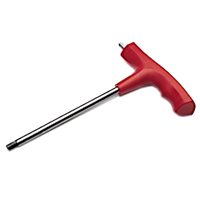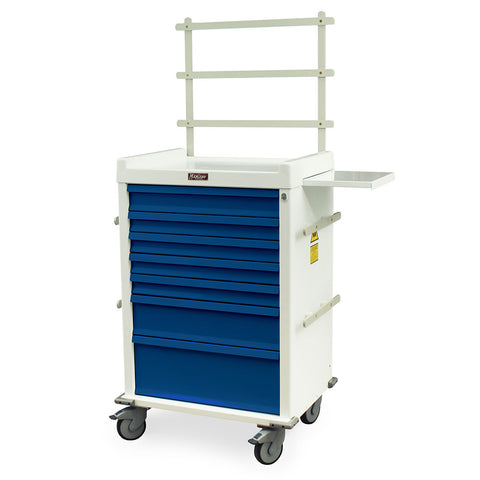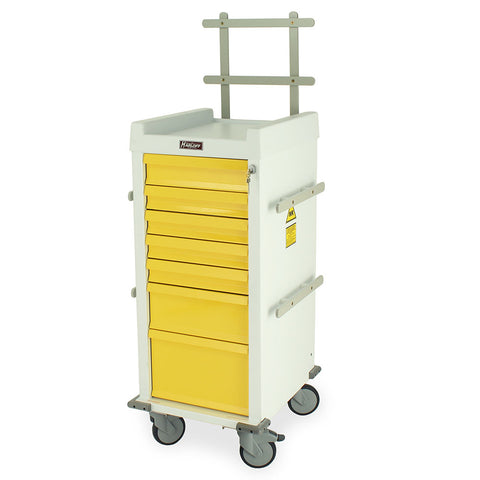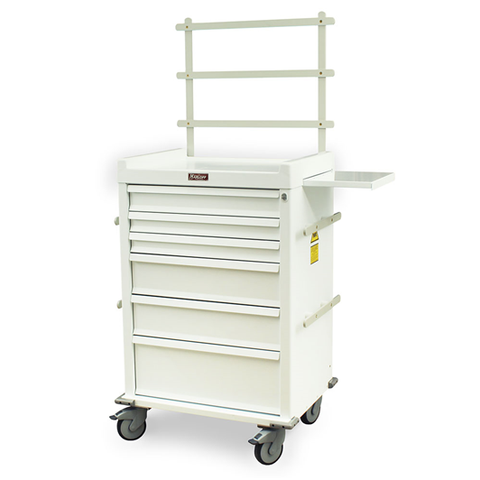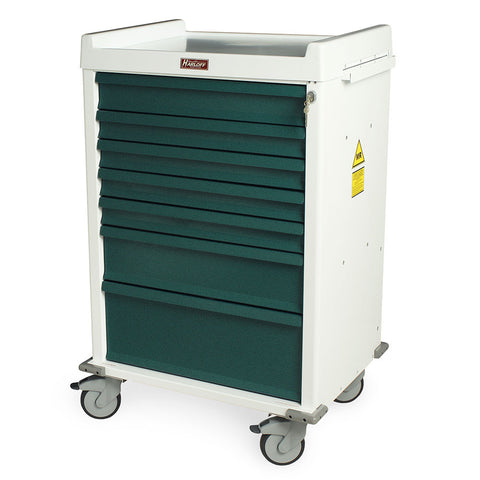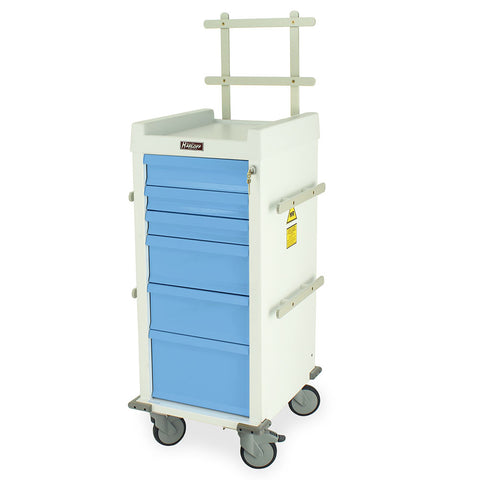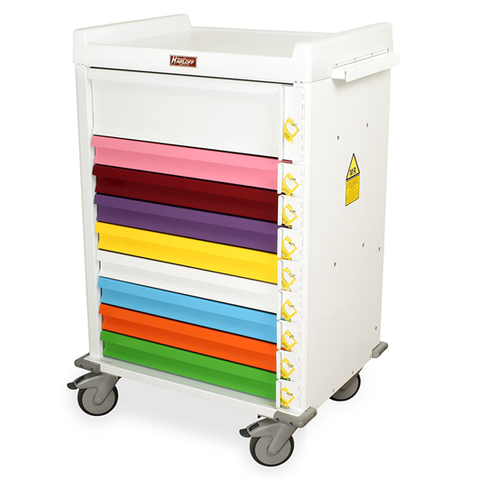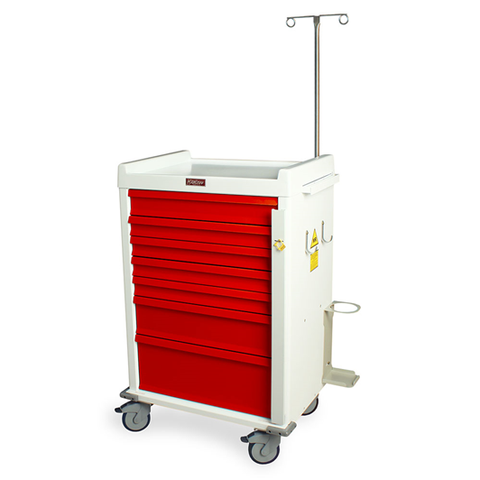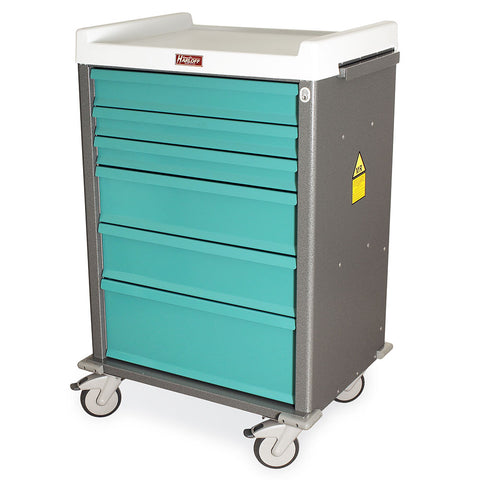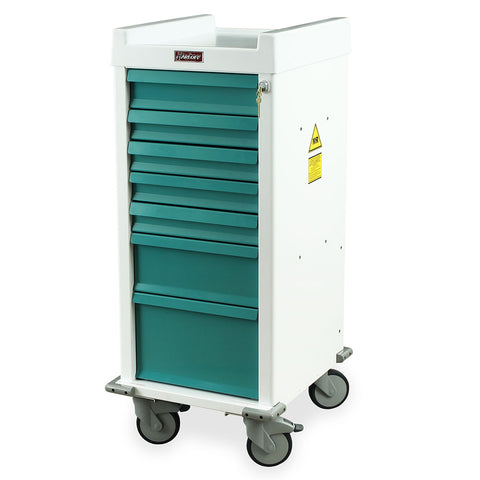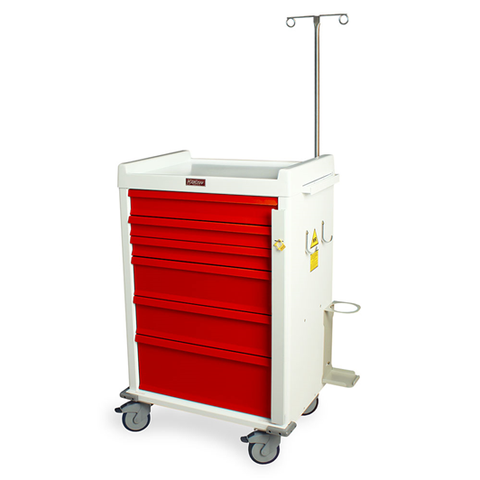Hospitals rely on MRI technology every day for life-saving diagnoses. But many facilities still make dangerous mistakes when choosing and managing MRI-safe equipment. These errors don’t just affect compliance—they put patients, staff, and valuable imaging hardware at risk.
This guide explains the most common issues hospitals face, why they happen, and how to correct them using certified equipment and proven safety protocols. We’ll also highlight our MRI-safe devices. MRI Med is a trusted vendor that helps hospitals meet the highest safety standards.
Introduction: MRI Safety Challenges in Hospitals
Why MRI-Safe Equipment Is Critical
MRI scanners use powerful magnets—up to 60,000 times stronger than Earth’s magnetic field. Any ferromagnetic object can turn into a dangerous projectile in seconds. Even a small item like a pair of scissors can be pulled into the scanner with tremendous force. For larger devices such as stretchers, wheelchairs, or IV poles, the risk is far greater.
Hospitals need equipment designed specifically for MRI environments. That means using devices labeled MR Safe or MR Conditional that meet ASTM F2503 and FDA guidelines. Choosing the wrong device—or assuming an unlabeled product is safe—can lead to injuries, equipment damage, and costly downtime.
Common Misconceptions About MRI Safety
Some staff believe that “non-metal” automatically means safe. Others assume if a product works in Zone III, it must also work in Zone IV. These shortcuts are dangerous. Not all plastics, composites, or alloys are non-magnetic. And MR-Conditional equipment is only safe under strict conditions such as field strength or scan type.
The Risks of Ignoring Proper Equipment Standards
Failing to follow MRI safety protocols has real consequences. Accidents have caused injuries, deaths, and millions of dollars in equipment damage worldwide. Hospitals that ignore standards face lawsuits, regulatory penalties, and accreditation problems.
Common Mistakes Hospitals Make
Overreliance on Labels Without Verification
Many hospitals assume a device marked “MRI Safe” is automatically reliable. But labeling alone isn’t enough—equipment must also come with documentation showing testing and compliance with ASTM F2503 standards. Before purchasing, always verify with the manufacturer or vendor that the product has been independently validated.
Recommended solution: MRI Med MRI-Safe Stretchers provide full testing documentation and detailed labeling to meet ASTM F2503 requirements.
Assuming All Plastic or Aluminum Equipment Is Safe
Some administrators believe that if a device looks non-metallic, it’s fine to use in Zone IV. But even small hidden ferromagnetic components—like screws, springs, or bearings—can make an item unsafe. This is especially true for low-cost imports without verified MR labeling.
Recommended solution: MRI Med Non-Magnetic Wheelchairs are constructed entirely of tested materials, ensuring they meet safety standards.
Using MR-Conditional Devices Without Following Guidelines
MR-Conditional devices are only safe in specific field strengths and scanning conditions. Using them outside those limits can create hazards. For example, a gurney designed for 1.5T scanners might not be safe in a 3T system.
Recommended solution: Choose devices such as the MRI-Conditional Transfer Boards from MRI Med that clearly indicate maximum field strength and safe use parameters.
Neglecting Zone IV Protocols
Zone IV is the scanner room—the most dangerous area if procedures aren’t followed. Hospitals sometimes allow unauthorized devices into this space or skip final safety checks, increasing projectile risks.
Recommended solution: Maintain a strict inventory of Zone IV–approved equipment using MRI Med MRI-Safe IV Poles and MRI Monitors, all clearly marked for scanner use.
Consequences of MRI Equipment Errors
Patient Safety Risks and Accidents
Improperly labeled or unsafe devices can cause serious injury or death if they become airborne projectiles. Even minor incidents create fear and disrupt patient trust.
Workflow Disruptions and Scan Delays
When an unsafe item is discovered late, scans must be postponed or canceled. This leads to backlogs, wasted staff time, and frustrated patients.
Legal and Regulatory Liabilities
Hospitals face lawsuits, insurance claims, and potential fines from OSHA or The Joint Commission if they fail to maintain MRI safety compliance. Accreditation may also be jeopardized.
How to Correct MRI Equipment Mismanagement
Proper Equipment Evaluation and Verification
Before purchasing, require ASTM F2503 certification, FDA clearance (if applicable), and independent third-party test results. Always request written documentation from your vendor.
MRI Med provides all documentation upfront for devices such as MRI Non-Magnetic Stools and MRI Wheelchairs, making compliance verification simple.
Staff Training and Awareness Programs
Even the best equipment can be misused without proper education. Radiology teams should receive training on MRI zone protocols, equipment labeling, and emergency procedures at least annually.
Implementing Regular Maintenance and Inspections
Schedule quarterly checks to ensure equipment is in good condition and correctly labeled. Replace damaged labels immediately to avoid confusion in Zone IV.
Equip Your Team with Tools They Can Trust
Get high-quality, MRI-dedicated equipment that supports safer scans, better positioning, and smoother patient care.
View Trusted ProductsChoosing the Right MRI-Safe Equipment
Understanding MR Safe vs. MR-Conditional vs. MR-Unsafe
-
MR Safe devices pose no known hazards in any MRI environment.
-
MR Conditional devices are safe only under specific conditions (field strength, SAR limits, etc.).
-
MR Unsafe devices should never enter MRI Zones III or IV.
See also: Understanding MRI-Safe, MR-Conditional, and MR-Unsafe Labels.
Using ASTM F2503 and FDA Guidelines
ASTM F2503 defines labeling standards for MRI equipment. Following these guidelines ensures proper classification and avoids ambiguity.
See also: ASTM F2503: What It Means for MRI Equipment Buyers.
Trusted Vendors and Certified Products from MRIMed
MRI Med offers rigorously tested products such as:
Case Studies and Lessons Learned
Real-Life Examples of Equipment Misuse
Several hospitals have experienced near-misses where unverified equipment was brought into Zone IV. In one case, an improperly labeled stool was pulled toward the bore, narrowly missing a patient.
How Hospitals Improved MRI Safety Practices
Facilities corrected these issues by switching to MRIMed-certified devices, implementing zone-specific checklists, and requiring annual staff training.
Practical Tips for Ongoing Compliance
Create a color-coded inventory system, post MRI safety signage, and keep updated documentation on all MRI-safe products.
FAQ:
1. How do hospitals verify MRI-safe equipment?
By checking ASTM F2503 labels, requesting manufacturer documentation, and reviewing third-party testing results.
2. Can MR-Conditional devices be safely used in Zone IV?
Yes, but only under the specific conditions listed by the manufacturer.
3. What is the most common mistake hospitals make with MRI equipment?
Assuming an unlabeled device is safe or relying solely on visual inspection.
4. How often should MRI equipment be inspected?
Quarterly inspections are recommended to ensure safety and compliance.
5. What should hospitals do if labels are missing or unclear?
Remove the device from MRI use until proper labeling or verification is obtained.
Related Articles
-
How to Choose MRI-Safe Equipment: Compliance, Safety, and Zones
-
Understanding MRI-Safe, MR-Conditional, and MR-Unsafe Labels
